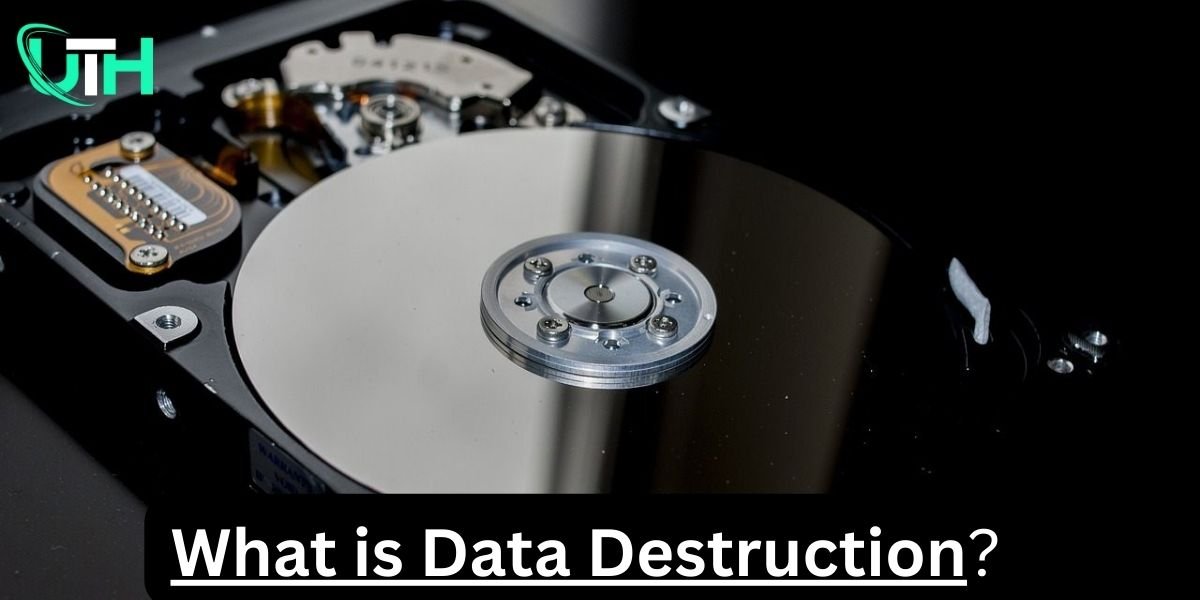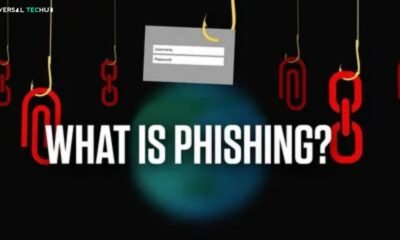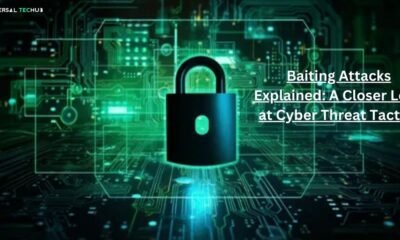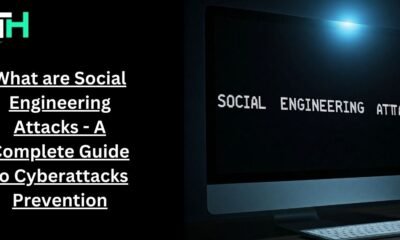Data Privacy
What is Data Destruction & Why You Should Care?

What is data destruction?
Data destruction refers to the secure removal of data from storage devices, ensuring it cannot be recovered or accessed by unauthorized individuals. Understanding what is data destruction is crucial for safeguarding sensitive information and meeting legal and regulatory requirements.
The erased data becomes inaccessible to the operating system, the program that generated it, and any other software tool that can access the data storage medium. To ensure the file is irretrievable, data destruction software is used to overwrite the available space and blocks with random data.
The Importance of Data Destruction
In an era where businesses of all sizes rely on electronic media for critical operations, securely protecting the data generated by this technology is essential. However, proper disposal is necessary when its life cycle comes to an end. Understanding what is data destruction? is crucial for complying with legal regulations, particularly for businesses with international operations.
The importance of deleting all data and blocking access may seem obvious. However, a recent data recovery research project revealed that the majority of 100 hard disks still contained residual data. Many individuals struggle to properly clean their devices before discarding them.
People often fail to delete all their information. For example, in 2022, Morgan Stanley Wealth Management was fined $35 million for improperly disposing of millions of consumers’ personal information.
When deciding how to best remove outdated data, take these considerations into account.
- Time: Does your organization regularly delete data, or is there a large backlog that needs immediate attention? When selecting the best destruction method for your needs, remember that each approach takes a different amount of time.
- Cost: Is it possible for your business to dispose of outdated equipment? Or will you find new uses for outdated technological media? Once again, the answer to this question will determine the data destruction method you use.
- Validation and certification:If you are deleting data for legal or regulatory reasons, make sure the method you use proves compliance with the rules.
Standards and Guidelines for Data Destruction
The following standards focus on logical data erasure using overwriting tools:
- ISO/IEC 27001: An organized method for handling and getting rid of sensitive data is part of this extensive, globally recognized standard from the International Organization for Standardization (ISO).
- 800-88 NIST: The most popular data destruction standard in the United States is NIST 800-88, which addresses the destruction, cleansing, purging, and disposal of several types of data media.
- System Security Instruction 5020 (AFSSI-5020) of the United States Air Force.
- Regulation 25-2 of the U.S. Army (AR 25-2).
- Information Security Federal Office of Germany (BSI-GS).
- The Communications Security Establishment Canada issues IT Security Guidance 06 (CSEC ITSG-06).
- GOST R-50739-95, Russian State Technical Commission.
- HMG IS5, or British HMG Infosec Standard 5.
- IEEE 2883 is the Institute of Electrical and Electronics Engineers.
- NAVSO P-5239-26, U.S. Navy Staff Office Publication 5239, Module 26.
- NCSC-TG-025, or National Computer Security Center Technical Guidance 025. National Computer Security Center Technical Guidance 025 (NCSC-TG-025).
Most companies can implement their data deletion policies and practices without adhering to specific data destruction standards. However, following a widely recognized data destruction standard can help formulate a comprehensive strategy and minimize the risk of errors or oversights during the data destruction process.
To protect data and reduce e-waste, IT teams need to recycle mobile phones properly. Explore how businesses can use smart sustainability strategies to stay eco-friendly while ensuring data security.
Different Methods of Data Destruction
Although there are several approaches to data destruction, none of them are flawless, and no single method can guarantee total success. However, understanding the different methods can help you choose the best one for your business.
Here are the advantages and disadvantages of each type of on site data destruction and hard drive data destruction.
Reformatting/Deleting
As mentioned earlier, deleting a file from an electronic device doesn’t completely remove it; the data remains on the memory chip or hard drive. Similarly, reformatting a disk doesn’t erase the data—it simply creates a new file system, much like removing the table of contents from a book without discarding the book itself. With easily accessible tools online, almost anyone can recover data from a reformatted drive.
Reformatting or deleting data only makes it invisible to the user but doesn’t fully remove it. To securely destroy hard drive data, a more reliable method is needed.
Wiping
Data wiping is the process of erasing information from an electronic device so that others cannot access it. The standard method for performing this activity involves physically attaching any media to a bulk wiping device. This method ensures the media can be reused without losing storage capacity.
Data wiping can be a time-consuming process, often taking an entire day to erase all data from a single device. While this method may work for individuals, it is not practical for companies that need to wipe multiple devices.
Data Overwriting
Overwriting data is a type of data wiping. It involves writing a pattern of ones and zeroes over existing data on an electronic device. In most cases, a single overwrite is enough. Still, for high-security media, multiple passes may be needed to completely erase all data and eliminate any traces, such as bit shadows.
Even after data is erased, an electron microscope can sometimes detect faint traces, known as data shadows. This is similar to writing on a pad of paper—removing the top sheet doesn’t erase the impression left on the pages below.
High-security organizations remain concerned about bit-shadowing, but low-risk companies typically don’t need to worry. Using an electron microscope to recover data is both costly and time-consuming.
Overwriting is the most common way to destroy data. However, it can be time-consuming and only works if the media is undamaged and can still store data. Additionally, it provides no security protection when overwriting.
You cannot overwrite hard disks with advanced storage management components. If you’re overwriting a device due to legal requirements, you may need a separate license for each media type. Overwriting is not foolproof. To reduce the chances of someone recovering deleted data, experts recommend following NIST or IRS guidelines.
Erasing
Another term for overwriting is erasure. You should erase all data on a hard disk and provide a certificate of destruction to confirm the process was completed successfully. Erasure is especially useful for companies with off-lease equipment like laptops, desktop computers, and corporate data centers. It is also a practical method for Hard drive data destruction that will be reused or repurposed for storing other data.
Degaussing
Degaussing uses a powerful magnet to remove the magnetism from an electronic medium, effectively destroying computer data. While it’s a fast and efficient method for erasing sensitive or large amounts of data, degaussing has two major drawbacks.
First, degaussing makes the hard disk of an electronic device unusable. It also damages the device covering the hard disk, making the entire equipment unusable.
Additionally, if the hard disk is no longer functional, you cannot confirm that the data has been destroyed. The only way to verify data destruction in this case is by using an electron microscope, which is usually expensive and impractical.
The density of a hard disk can also impact degaussing performance. As technology advances and hard drives become more powerful and larger, the efficiency of degaussing has decreased.
Physical Destruction
Many people want to recycle their old technology but hesitate due to concerns about sensitive data stored on their devices.These individuals often take out the hard disk and use a hammer to break it into pieces.
Physical destruction is a highly effective method for securely removing data, making it a reliable choice for enterprises and organizations of all sizes.
Physical data destruction has two big problems: it is very expensive and harmful to the environment. Destroying devices can cost a lot and make it difficult for companies that recycle old electronic items as part of their green plans.
One way to physically destroy data is degaussing. Another option is incineration, but it is less common because it risks breaking the chain of custody and must be done far from where people live.
Shredding
Another way to physically destroy data is shredding, which uses an industrial machine to break drives into pieces. Experts consider it the safest and most cost-effective method for erasing data from electronic devices that are no longer useful, such as:
- Hard drives
- Solid-state drives
- Optical drives
- Smartphones
- Tablets
- Motherboards
- Thumb drives
- Credit card swipe devices
Shredding breaks electronic devices into pieces no larger than two millimeters. Solid-state drives often need special shredding machines because they are smaller than standard internal drives. Be careful to inquire about the tools used by data destruction companies while assessing them.
Shredding is a good option for businesses with large data centers or old hard drives and media because it is a fast and secure way of hard drive data destruction. If you operate in a high-security setting, shredding is the best choice as it ensures all data is destroyed.
Best Practices for Secure Data Destruction
Understanding what is data destruction? might be helpful and crucial for implementing best practices to secure dataHowever, there is no universal approach to data destruction. Every company has different data, legal rules, and risks. The best way to destroy data is by creating customized procedures that meet specific needs, considering factors like compliance, security risks, and the type of data involved
- Understand the data:The first step in managing data is knowing the types of data a company stores and why they are important. Using simple tools like data classification and storage systems can help track all data, keep it in the right place, and alert staff to delete it when it is no longer needed. A big problem for businesses is orphaned data—data that is stored and used but not properly managed.
- Understand the Regulations: A company must follow different data protection and privacy laws based on where it operates. It’s important to know which rules apply to the business and create data management and disposal processes that meet these requirements. For example, some rules may require keeping certain types of data for a long time, while others may not.
- Implement proper DLM:It’s hard for one technology leader or an IT team to manually track the lifespan of every piece of data in a company. That’s why businesses need good DLM software to keep track of all data, manage its storage, move it to the right storage as needed, and delete outdated data properly.
- Select destruction methodologies:Understand what proper data destruction looks like. This can include physically destroying storage devices or using advanced software to erase or overwrite data. Different types of data may need different methods for disposal. For example, it’s a good idea to keep magnetic disks in secure storage until a mobile shredding service can destroy them.
- Include third parties:Data protection, including data deletion, should also apply to third parties that handle the company’s data. Contracts with third-party data processors or storage providers should clearly include rules requiring them to properly destroy any company data they have.
- Consider contingencies: Think carefully about backup plans for data access and storage, as well as unexpected situations where data destruction might happen. For example, if a storage system needs maintenance and a technician has to access it, should the data be moved or deleted before they start? Similarly, how should data be destroyed when decommissioning or repurposing the storage system to ensure security and follow the rules?
- Ensure accountability:Whether data is destroyed physically by shredding or digitally by overwriting, laws may require written proof or confirmation that the data has been deleted. Policies should include rules for those managing data to confirm its deletion. A simple document can work, listing the deleted data, who approved the deletion, the method used, and the completion date. This confirmation is usually part of the company’s overall data protection or DLM process.
Conclusion
Getting knowledge about what is data destruction and its critical role in safeguarding sensitive information is essential for any organization. By following best practices like using proper disposal methods, meeting legal requirements, and following standards, companies can lower the risks of data breaches and legal issues.
Whether through physical destruction, degaussing, or erasure, choosing the right method for your business ensures that data is secure and cannot be recovered. Along with protecting your company, focusing on sustainability and accountability in data deletion also helps meet ethical and environmental responsibilities.

-

 Phishing attack8 months ago
Phishing attack8 months agoWhat is Spear Phishing and How You Can Identify This Scam?
-

 Social engineering attack10 months ago
Social engineering attack10 months agoBaiting Attacks Explained: A Closer Look at Cyber Threat Tactics
-

 Social engineering attack8 months ago
Social engineering attack8 months agoWhat are Social Engineering Attacks – A Complete Guide to Cyberattacks Prevention
-

 Social engineering attack9 months ago
Social engineering attack9 months agoSpear Phishing Attack: A Targeted Cyber Threat
-

 Social engineering attack10 months ago
Social engineering attack10 months agoWhat is spear phishing attack? A detailed guide
-

 Social engineering attack10 months ago
Social engineering attack10 months agoWhat is spear phishing in cyber security?
-

 Phishing attack4 months ago
Phishing attack4 months agoWhy is Phishing Still a Major Cyber Threat? Everything You Need to Know
-

 Phishing attack8 months ago
Phishing attack8 months agoWhat Are Phishing Emails? A guide for you



















